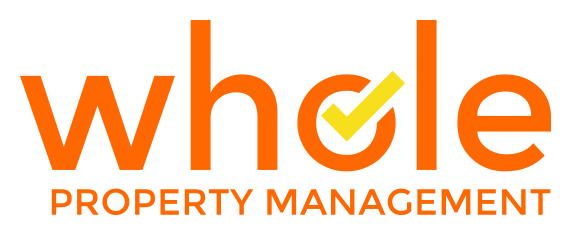Tips for Conducting a Successful Tenant Walk-Through Inspection
Investing in a rental property can be an incredibly profitable venture. But, it doesn’t come without risks. When you open your home to strangers, you become vulnerable to risks such as property damage, holdover tenancies, and legal disputes. There are plenty of things you can do to minimize these risks, like screening tenants and conducting regular property inspections.
Landlords commonly overlook initial inspections when leasing their rental. Conducting a tenant walk-through inspection allows you to assess the property’s overall condition and establish clear maintenance expectations. This reduces the risk of property damage and security deposit disputes.
The Benefits of Tenant Walk-Through Inspections
Conducting a walk-through inspection with tenants offers numerous benefits for landlords, enhancing tenant relationships, protecting property, and ensuring a smooth rental process.
Here are some other key advantages:
- Building Trust with Tenants: When landlords take the time to walk through the property with tenants, it demonstrates a commitment to transparency.
- Identifying Maintenance Needs: During the walk-through, landlords can identify any maintenance issues that need to be addressed before tenants move in. Promptly handling these repairs ensures the property is in good condition, which can prevent small problems from escalating into costly repairs later.

- Setting Expectations: A walk-through inspection is an opportunity to clearly explain the tenant’s responsibilities for maintaining the property. Landlords can outline expectations for cleanliness, reporting repairs, and adhering to the lease agreement terms, reducing the likelihood of misunderstandings and non-compliance.
- Enhanced Tenant Satisfaction: Tenants are likely to feel valued when landlords involve them in the inspection process. Addressing any concerns or requests they have during the walk-through can lead to a more positive rental experience, potentially increasing tenant retention and reducing turnover.
- Preventing Security Deposit Disputes: Having a documented walk-through inspection can protect landlords in the event of legal disputes.
It provides evidence that the property was in good condition at the start of the tenancy and can help justify any deductions from the security deposit for damages or excessive wear and tear.
Tips For Conducting a Tenant Walk-Through Inspection
Here are essential tips for conducting an effective tenant walk-through inspection:
1. Schedule The Inspection in Advance
Arrange a mutually convenient time for the inspection with the tenant. Providing ample notice ensures that both you and your tenants can prepare.
2. Create an Inspection Checklist
Prepare a detailed checklist of every part of the property you’re planning to inspect. Make sure to include the following items:
- floors
- walls
- ceilings
- windows
- doors
- appliances
- plumbing
- HVAC
- electrical systems
- exterior areas
A thorough list will help ensure nothing is overlooked.
3. Document The Property’s Condition
When conducting the inspection, make sure to keep detailed notes of the property’s condition.

Additionally, take clear, dated photographs or videos of the property’s condition. This visual evidence can be invaluable if a dispute ever arises regarding damages or the return of the security deposit.
4. Bring The Necessary Tools
When conducting a property inspection, it’s better to be safe than sorry. Carrying tools such as a flashlight, notepad, pen, camera, and the inspection checklist will help you thoroughly inspect and document the property’s condition.
5. Explain The Process to Tenants
Tenant walk-through inspections aren’t the norm in the real estate world, so it can be a strange process for tenants. Taking the time to talk with tenants about the purpose and process of the walk-through inspection can go a long way. This transparency can ease any anxiety tenants might have.
6. Be Thorough
It’s easy to overlook problems when inspecting a property. To avoid this, you should be as detailed and thorough as possible. You should also be objective and fair in assessing the property’s condition, distinguishing between normal wear and tear and actual damage.
7. Review The Lease Agreement
A tenant walk-through inspection is the perfect time to outline your expectations to your tenants regarding the terms of the lease. At the end of the inspection, make sure to go over the lease agreement.

Make sure that tenants understand their responsibilities regarding regular and emergent property maintenance and care, as well as other important policies before signing the lease.
8. Make Any Needed Repairs
If you come across any issues that require immediate attention, you should address them as soon as possible. Communicate clearly with tenants, providing a timeline for their completion and keeping them informed of the overall progress.
Promptly addressing maintenance issues demonstrates your commitment to maintaining the property and tenant satisfaction.
9. Provide Copies of Documentation
After conducting the inspection, you should provide the tenant with a copy of the completed inspection report, as well as any photographs or videos taken. This transparency helps build trust and ensures both parties have a shared understanding of the property’s condition, greatly reducing potential disputes in the future.
10. Be Respectful and Professional
The tenant walk-through inspection is one of the first interactions you’ll have with your new tenants, so you should focus on making a good impression. Maintain a respectful and professional demeanor throughout the inspection.
Bottom Line
Conducting a tenant walk-through inspection is one of the easiest ways to keep your rental property protected. Inspecting the property before tenants move in allows you to identify maintenance issues before they escalate, build a positive relationship with tenants, and avoid security deposit disputes later on.
By following these essential tips, you’ll be able to conduct tenant walk-through inspections more efficiently. If you need help inspecting your Denver rental, contact Whole Property Management today!
